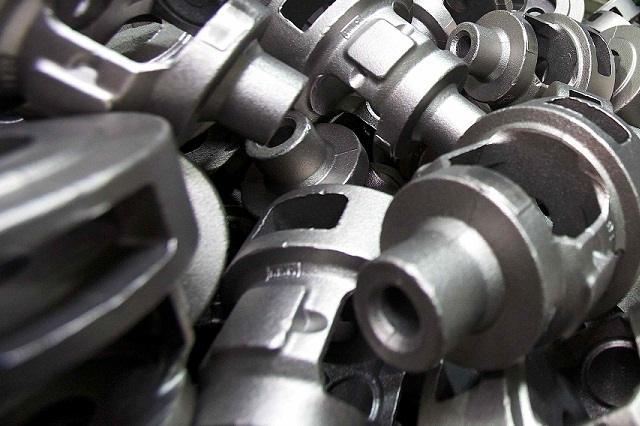Steel surfaces can sometimes exhibit residual mill scale as a side effect of the production process. Though not harmful in and of itself, the presence of scale is detrimental in conditions where corrosion is likely to occur, and it must be removed before a workpiece can be given a protective coating.

This post discusses the role of mill scale in the steel production and coating process, including the fastest way to remove mill scale from surfaces.
Identifying Mill Scale
Mill scale (often known simply as ‘scale’) refers to the thin, flaky texture that forms on the outer surface of hot-rolled iron oxides and metals. It is a by-product of manufacturing hot-rolled metal plates and sheets, occurring as the surface oxidizes during the heating, conditioning and hot rolling processes.
Scale has a distinctive blue-grey colour and a flaky or powdery consistency. It is not a continuous layer, but rather a thin, uneven coat (1mm thickness or less) of mixed iron oxides that chips easily on contact.
Unlike rust, which forms over a long period of exposure to oxygen and moisture, scale forms on all steel and iron products that are hot rolled. The only way to prevent its appearance would be to manufacture them in an inert atmosphere.
Mill scale is not in itself harmful to the workpiece. In fact, in the short term, a layer of scale helps to protect the metal’s surface from corrosion and other negative atmospheric effects. The problem begins when the mill scale breaks – which, given its brittleness, is practicably inevitable during handling, storage or transportation.
Why Mill Scale Must Be Removed
Scale is very fragile, and the moment it cracks, it turns from a protective barrier to a detriment.
Mill scale is less reactive than the steel surface it covers, acting as a cathode to the more reactive material underneath. Once the scale coating breaks (which occurs easily) and moisture comes through, the presence of the scale iron oxide accelerates the corrosion process at the breakage point.
The presence of mill scale is also a hindrance to applying paint or powder coating, which adheres poorly to scale. Left in place, the scale will eventually chip and break the coating’s surface, allowing moisture to penetrate.
It is wasteful to apply a protective coating over a workpiece covered with mill scale. For this reason, scale removal is an indispensable step in the pre-coating process.
Removing Mill Scale from Iron or Stainless Steel
To achieve a smooth, durable coating, mill scale must be removed from an iron or steel workpiece before application. This is true for powder coatings, paints and other finishing techniques meant to protect the surface from corrosion.
Shot Blasting, a method used to clean, strengthen and polish metal, is a fast and cost-effective way to remove mill scale. This service is normally carried out to prepare the surface of steel before applying any coating. Having the steel prepared by shot blasting is generally considered to be the most important factor affecting any corrosion protection system or coating.
At Latem Industries, our diverse line of wheel/suction shot blasting equipment includes monorail, tumble blast, swing table and conveyor to suit your blasting needs.
Latem carries a wide range of shot and grit to service your needs, including:
- Scale Removal
- Shot Peening
- White Metal Cleaning
- Rust Removal
- Deflashing of Castings
- Commercial Clean
- Uniform Finish
- Prep Prior to Paint
For further information on shot blasting, or to request a free quote for shot blasting in Southern Ontario, please contact us.

